Zoorkhaneh: The House of Strength (workout, music & more)
Zoorkhaneh is the house of strength, not only for the body but also for the soul and spirit. An ancient traditional Iranian sports club, dating back to the Zoroastrianism and Mithraism era (almost 700 years ago) where the athletes train rigorously with live music playing with Zarb (Persian drum) and poems of Shahnameh, the masterpiece epic book of Ferdowsi (ancient Iranian poet).
Zoorkhaneh Origin
As claimed by some people, the idea of zoorkhaneh began during the Arab invasion of Persia in the 7th century and led to the establishment of a secret society to liberate Persia. Young Persian males gathered in a place they called the zoorkhaneh and performed a ritual that included strenuous physical activities, weight lifting, and martial arts. Pahlevani and zourkhaneh rituals is the name inscribed by UNESCO for varzesh-e pahlavāni.
In the beginning, the zoorkhaneh was organized for political reasons; however, in the modern day, it is a gymnasium, sporting arena, and meeting house for male Iranian athletes. Zoorkhaneh Athletes were considered nobles in terms of the ranking after the reverends. And those who knew the ways of combat were highly respected by the public. These gymnasiums can be found in almost every Iranian city or town and even in neighboring countries like Afghanistan, Iraq, and Azerbaijan.
Zoorkhaneh in Iran
In the Iranian Culture, Zoorkhaneh is a sacred place where physical activity is combined with art and literature. Having a strong morality, devotion, and honorary manner is as important as having a strong body. The ritual is taken place in a building shaped as a dome with an octagonal recessed arena (Gowd) surrounded by terraced seats. The entrance door is short therefore when entering, everyone must bow their head to respect this place and people.
The Architecture of Zoorkhaneh
The interior structure of the house is built like the classical architecture of Persia with Aina-Kari (covering the wall with a mosaic of mirror-glass) as well as the portrait of Ali (the son-in-law of Prophet Mohammed) hanging on the wall. Before and after every session, the members pray upon Ali as a memory of him. Athletes (Bastankars) wear a special attire representing the ancient archeological Persian nobles and warriors, a tight leather breech without shirts.
The Traditional Music
Zoorkhaneh has its music, exercises, and equipment. An elder man, Morshed, or the master (Pishkesvat) who leads the ritual chants verses from the Shahnameh, evokes a sense of heroism and exhilaration within the members. With the sound of drumbeats and the clanging of a bell, the beautiful ritual commences.
Etiquette of Zoorkhane
Athletes of ten to twenty men stand around the arena (Gowd) to warm up and later perform exercises using metal shields (sang), chains that are simple iron weights (kabbadeh), and wooden Persian mils, followed by a Sufi-like whirling and juggling to build strength and stamina. The members move together with the drum beats of a goblet drum called Zarb.
The Morshed sits above the arena, a place called (sardam), and directs the pace of the movements by the rhythms played on the traditional drum. Push-ups are carried out by the members before wrestling. They rub oil over their bodies to slip out of their opponent’s clutches without difficulty.
These exercises are very similar to eastern martial arts and are aimed to aid meditation and contemplation. Participants may be from different social backgrounds, but during the performance, the students are all taught about ethical values and courteousness under the leadership of the Morshed. Religion plays a significant role in this sacred place since the athletes who possess the ‘Seyed’ or ‘Sadat’ titles (their family tree roots back to the prophet of Islam) hold high esteem.
The Members Rank
In a Zoorkhaneh, the members progress and are ranked up by the guidance of the Morshed to the highest grade, known as the champion or Phalavan, who usually stands in the center and conducts this traditional performance. The Pahlavan is obligated to help the weak, praise his Lord and do good deeds, for he is regarded as a spiritual adept.
As mentioned, the members have different ranks based on their experience. The first grade begins after a year of participation in the House. The second grade is after three years of part taking, and the Morshed will recite a divine blessing (Salawat), meaning “peace be upon Him.” a salutation to Prophet Mohammed.
Within six years of participation, when the athlete is around the age of 18, he will receive the third grade. Upon entering the arena, the Morshed will say a Salawat for the student. Fourth-grade participants will receive their rank in 12 years of experience. The fifth is given to them after 15 years and the sixth after 18 years of involvement.
The Morshed will play the Zarb (drum) When the sixth-grade student steps inside the arena. The seventh-grade students receive the rank in 24 years. The Morshed will ring the bell while the student does the Sufi-whirling. Those who were present for 32 years will get the eighth-grade rank. The bell will cling every time this student steps in or out of the pit.
Finally, the ninth grade is the last rank where the student will attain the Pahlavan title after 45 years of practicing these unique physical exercises. This title is very rare, and only a few men possess such a high honorable rank.
Pahlevani Wrestling
An annual competition takes place in Iran known as the Pahlevani Wrestling, and the champion will earn a Bazouband which is an armband. Traditionally, the king gave the armband to the winner, but now the president of Iran has to award it. Gholamreza Takhti, one of the most popular Phalevans, is also known as Jahan Pahlevan, meaning world champion. He is a three times winner and an Olympic Gold medalist.
Zoorkhaneh Houses
Many Zoorkhaneh Houses are active in use all around the country. Here are some of the best ones to visit. Pahlavan Pour in Tehran, one of the oldest Zoorkhaneh in the capital, was established almost 100 years ago. Ali Mirza, located in Hamadan, is another great option to visit, which was initiated 200 years ago. Poolad in Shiraz was once a cistern and is now an old Zoorkhaneh from 160 years ago. An additional one is situated in Tehran named Shir, which is also from around 100 years ago.
Are you planning to travel to Iran and looking for an Iran travel agency? Check out our Iran tours.





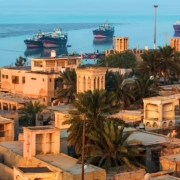
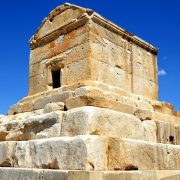

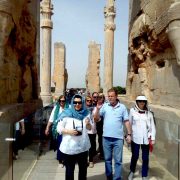

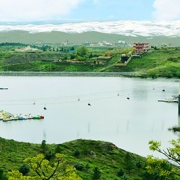

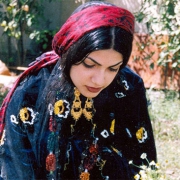




Leave a Reply
Want to join the discussion?Feel free to contribute!